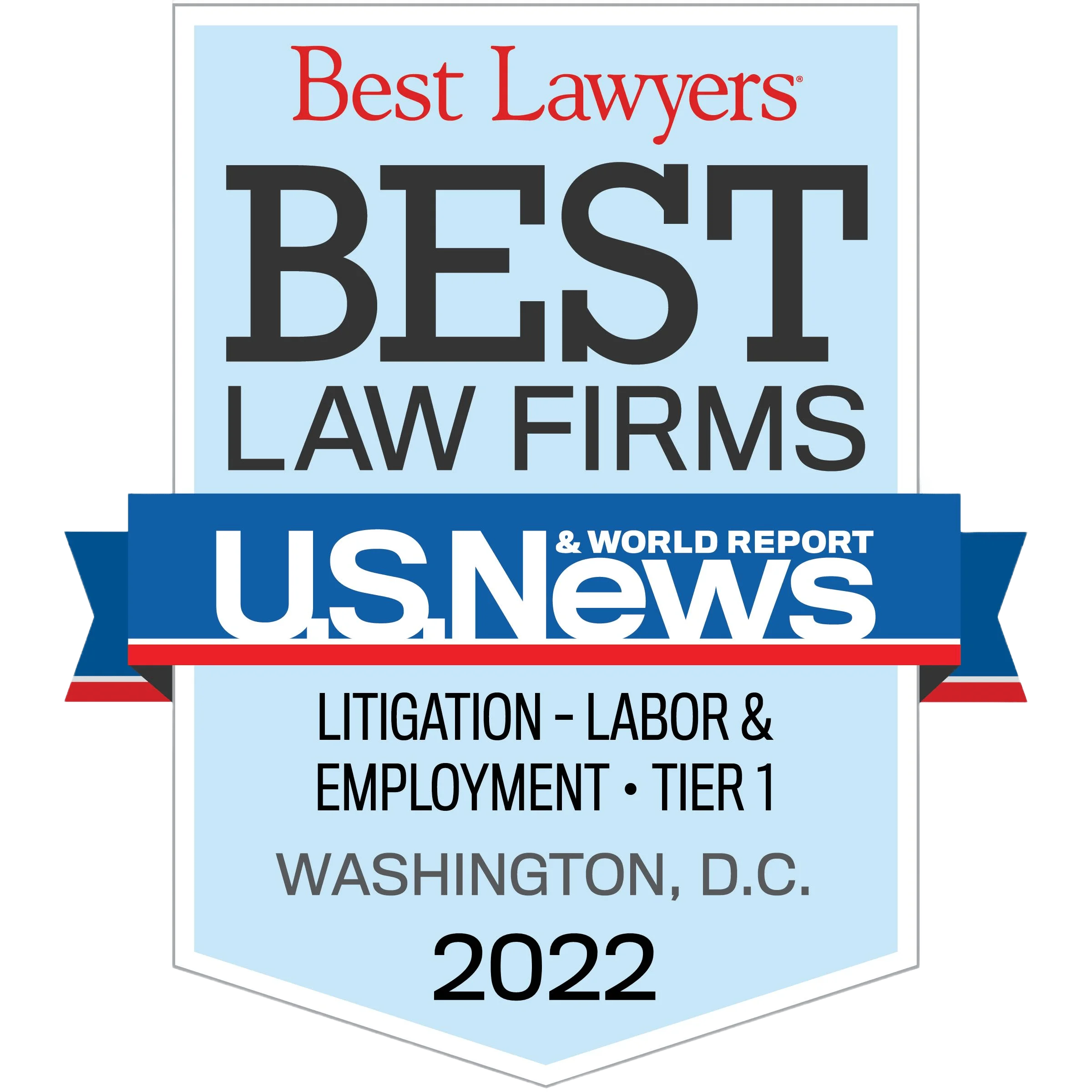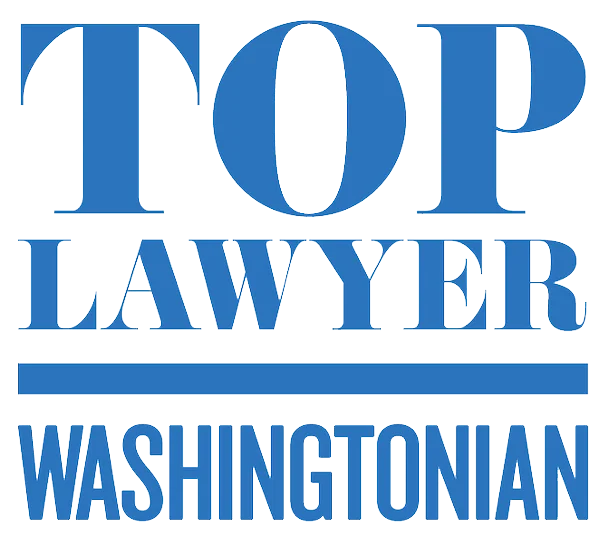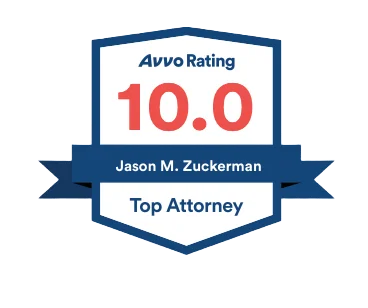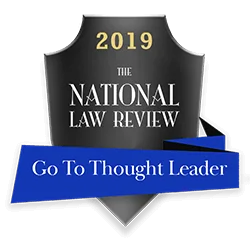The Department of Labor Administrative Review Board’s ruling in Palmer v. Canadian National Railway, ARB No. 16-035, ALJ No. 2014-FRS-154 (ARB Sept. 30, 2016) (en banc), underscores that the burden-shifting framework under most of the whistleblower-protection laws enforced by the Department of Labor is very favorable to whistleblowers. Though the ARB held that ALJs can consider an employer’s reason for taking an adverse action in determining whether the whistleblower has proven “contributing factor” causation, such evidence will rarely be dispositive where there is any evidence that the complainant’s protected conduct played any role in the adverse action. Since the whistleblower need show only that the protected activity played a role in the adverse action, “the employee necessarily prevails at step one if there was more than one reason and one of those reasons was the protected activity.” Palmer, ARB No. 16-035 at 53.
Palmer also clarifies several critical aspects of the burden-shifting framework under most of the DOL whistleblower-protection laws:
- “Contributing factor” causation is a broad and forgiving standard for whistleblowers, requiring the complainant to show that protected activity played some role—even an insignificant or insubstantial role—in the adverse action.
- Decision-maker knowledge of the protected activity and close temporal proximity will suffice to prove causation in some cases.
- A whistleblower need not disprove the employer’s reasons for taking an adverse action (i.e., prove pretext) to demonstrate causation.
- “Since the ‘contributing factor’ standard requires only that the protected activity play some role in the adverse action, the employer’s nonretaliatory reasons are not ‘weighed against’ the employee’s protected activity to determine which reasons might be weightier. In other words, the ALJ should not engage in any comparison of the relative importance of the protected activity and the employer’s nonretaliatory reasons.” at 55.
- Once the whistleblower demonstrates contributing factor causation (a minimal burden), the employer has an onerous burden to prove by clear and convincing evidence that it would have taken the adverse action absent the employee’s engaging in protected conduct. “It is not enough for the employer to show that it could have taken the same action; it must show that it would have. . . . Quantified, the probabilities might be in the order of above 70%.” at 57.
Two-Step Framework for DOL Whistleblower Claims
In cases brought under DOL-administered whistleblower provisions incorporating the AIR-21 burden-of-proof provision, there is a two-step framework: “first, the factfinder must determine whether the employee has proven, by a preponderance of the evidence, that the protected activity was a contributing factor in the adverse action (the “contributing factor” step).” Id. at 35. In other words, the ALJ assesses whether it is “more likely than not that the employee’s protected activity played a role, any role whatsoever, in the adverse personnel action.” Id. at 35. If the employee prevails at step one (proves causation), “the factfinder must determine whether the employer has proven, by clear and convincing evidence, that, even if the employee had not engaged in protected activity, the employer nonetheless would have taken the same adverse action.” Id. at 35.
Contributing Factor Causation Is a “Broad and Forgiving” Standard
During the first step or phase of the analysis, the ALJ can consider any relevant, admissible evidence to determine whether the complainant has proven that protected conduct contributed to the adverse action. The ARB expressly held that the burden of proving causation is very favorable to whistleblowers:
We have said it many a time before, but we cannot say it enough: “A contributing factor is ‘any factor, which alone or in combination with other factors, tends to affect in any way the outcome of the decision.’” We want to reemphasize how low the standard is for the employee to meet, how “broad and forgiving” it is. “Any” factor really means any factor. It need not be “significant, motivating, substantial or predominant”—it just needs to be a factor. The protected activity need only play some role, and even an “[in]significant” or “[in]substantial” role suffices. Id. at 53 (citations omitted).
Recognizing that “employees are likely to be at a severe disadvantage in access to relevant evidence,” the ARB noted that causation can be proven using circumstantial evidence. Such evidence can include “motive, bias, work pressures, past and current relationships of the involved parties, animus, temporal proximity, pretext, shifting explanations, and material changes in employer practices, among other types of evidence.” Bobreski v. J. Givoo Consultants, Inc., ARB No. 13-001, ALJ No. 2008-ERA-3 (ARB Aug. 29, 2014).
Knowledge and Timing May Suffice to Prove Causation
Though the ARB rejected a per se knowledge/timing rule, the ARB held that “an ALJ could believe, based on evidence that the relevant decisionmaker knew of the protected activity and that the timing was sufficiently proximate to the adverse action, that the protected activity was a contributing factor in the adverse personnel action.” Palmer, ARB No. 16-035 at 56. But before concluding that a complainant has proven causation, the ALJ must consider all relevant evidence.
In Mixed Motive Cases, Whistleblowers Will Always Prevail During the First Step
While Palmer permits ALJs to consider the alleged non-retaliatory reasons for an adverse action at the causation stage, such evidence is essentially irrelevant because the whistleblower will prevail at the causation stage if the whistleblower’s protected activity played any role in the adverse action. The ARB held:
Importantly, if the ALJ believes that the protected activity and the employer’s nonretaliatory reasons both played a role, the analysis is over and the employee prevails on the contributing-factor question. Thus, consideration of the employer’s nonretaliatory reasons at step one will effectively be premised on the employer pressing the factual theory that nonretaliatory reasons were the only reasons for its adverse action. Since the employee need only show that the retaliation played some role, the employee necessarily prevails at step one if there was more than one reason and one of those reasons was the protected activity.
Id. at 53 (citations omitted) (emphasis added).
This aspect of Palmer is critical because it requires ALJs to assess the employer’s non-retaliatory reasons for an adverse action under the “clear and convincing” evidence standard, not under a preponderance-of-the-evidence standard. And while the Palmer majority appears eager to reject Fordham v. Fannie Mae, Palmer demonstrates why Fordham is correct. If the causation analysis is over once the complainant proves that protected activity played any role in the adverse action, then the evidence supporting the employer’s non-retaliatory reasons for the adverse action is irrelevant once complainant has made this minimal showing. Palmer fails to explain why ALJs should expend limited resources considering irrelevant evidence rather than proceeding to the second phase of the analysis (the same-action affirmative defense).
Whistleblowers Need Not Demonstrate Pretext
By requiring ALJs to consider the employer’s alleged non-retaliatory reasons for an adverse action at the causation stage, the ARB could unintentionally encourage ALJs to engage in a pretext analysis. Fortunately, the ARB reaffirmed its prior decisions holding that a whistleblower need not disprove the employer’s reasons for taking an adverse action:
This is why we have often said that the employee does not need to disprove the employer’s stated reasons or show that those reasons were pretext. Showing that an employer’s reasons are pretext can of course be enough for the employee to show protected activity was a “contributing factor” in the adverse personnel action. Indeed, at times, the factfinder’s belief that an employer’s claimed reasons are false can be precisely what makes the factfinder believe that protected activity was the real reason.
Palmer, ARB No. 16-035 at 53-54 (citations omitted) (emphasis added). It will be critical for whistleblower advocates to prevent ALJs from using Palmer to require complainants to prove pretext.
At the Causation Stage, ALJs Should Not Weigh the Employer’s Non-Retaliatory Reasons Against the Employee’s Protected Activity
Palmer cautions ALJs not to weigh the relative importance of the protected activity and the employer’s non-retaliatory reasons in determining “contributing factor” causation:
That is also why the term “weigh” when describing the ALJ’s task may well have added to the confusion. Since the “contributing factor” standard requires only that the protected activity play some role in the adverse action, the employer’s nonretaliatory reasons are not “weighed against” the employee’s protected activity to determine which reasons might be weightier. In other words, the ALJ should not engage in any comparison of the relative importance of the protected activity and the employer’s nonretaliatory reasons. As long as the employee’s protected activity played some role, that is enough. But the evidence of the employer’s nonretaliatory reasons must be considered alongside the employee’s evidence in making that determination; for if the employer claims that its nonretaliatory reasons were the only reasons for the adverse action (as is usually the case), the ALJ must usually decide whether that is correct. But, the ALJ never needs to compare the employer’s nonretaliatory reasons with the employee’s protected activity to determine which is more important in the adverse action.
Id. at 55 (citations omitted) (emphasis added). Palmer’s admonition against engaging in a comparative weighing of the respective parties’ causation evidence is similar to the holding in Fordham that such “weighing is exactly what the ‘contributing factor’ statutory provision was designed to eliminate. . . . An employer’s legitimate business reasons may neither factually nor legally negate an employee’s proof that protected activity contributed to an adverse action.” Fordham, ARB No. 12-061 at 23. The main difference between Fordham and Palmer is that Palmer muddies the waters by requiring ALJs to consider essentially irrelevant evidence at the causation stage.
Under Palmer, ALJs should not engage in comparative weighing and the causation analysis ends once the complainant shows that protected conduct played any role in the adverse action. Yet Palmer requires ALJs to consider the employer’s evidence of a non-retaliatory reason for the adverse action once the complainant has already demonstrated causation, “but only to determine whether the protected activity played any role at all.” Palmer, ARB No. 16-035 at 15. Such a requirement appears to invite the comparative weighing that Palmer purports to prohibit.
The Same-Action Affirmative Defense in Whistleblower Cases is an Onerous Burden
Once the complainant has met the generous “contributing factor” causation standard, the employer faces an onerous burden to prove an affirmative defense:
It is not enough for the employer to show that it could have taken the same action; it must show that it would have. The standard of proof that the ALJ must use, “clear and convincing,” is usually thought of as the intermediate standard between “a preponderance” and “beyond a reasonable doubt”; it requires that the ALJ believe that it is “highly probable” that the employer would have taken the same adverse action in the absence of the protected activity. “Quantified, the probabilities might be in the order of above 70% . . . .” Again, as when making a determination at step one, the ALJ must consider all relevant, admissible evidence when determining whether the employer has proven that it would have otherwise taken the same adverse action; and again, it is crucial that the ALJ find facts and clearly articulate those facts and the specific evidence in the record that persuaded the ALJ of those facts.
Id. at 57 (citations omitted) (emphasis added).
Whistleblower Advocates Must Remain Vigilant to Ensure that Palmer Will Not Erode the Strong Protection that Congress Afforded to Whistleblowers
If Palmer is applied correctly, (1) the employer’s evidence supporting an adverse action will rarely be dispositive at the causation stage where there is any evidence that protected conduct contributed to an adverse action; and (2) ALJs will not engage “in any comparison of the relative importance of the protected activity and the employer’s nonretaliatory reason.” But by requiring ALJs to consider the non-retaliatory reason for an adverse action at the causation stage, the ARB risks forcing complainants to prove pretext. Whistleblower advocates must remain vigilant to ensure that Palmer will not weaken the favorable burden-shifting framework that Congress has afforded whistleblowers.
Whistleblower Retaliation
Guide to Sarbanes-Oxley (SOX) Whistleblower Law
The whistleblower protection provision of the Sarbanes-Oxley Act provides robust protection to corporate whistleblowers. Zuckerman Law has released guide to the SOX whistleblower protection law: Sarbanes-Oxley Whistleblower Protection: Robust Protection for Corporate Whistleblowers. The guide summarizes SOX whistleblower protections and offers concrete tips for corporate whistleblowers based on lessons learned during years of litigating SOX whistleblower cases.
The goal of the guide is to arm corporate whistleblowers with the knowledge to effectively combat whistleblower retaliation, avoid the pitfalls that can weaken a SOX whistleblower case, and formulate an effective strategy to obtain the maximum recovery.
Sarbanes Oxley Whistleblower Retaliation Remedies
Experienced Sarbanes-Oxley Whistleblower Attorneys
The whistleblower lawyers at Zuckerman Law have substantial experience litigating Sarbanes Oxley whistleblower retaliation claims and have achieved substantial recoveries for officers, executives, accountants, auditors, and other senior professionals. To learn more about corporate whistleblower protections, see our Sarbanes-Oxley Whistleblower Protection FAQ. Click here to read client testimonials about the firm’s work in SOX whistleblower matters and other employment-related litigation.
To schedule a free preliminary consultation, click here or call us at 202-262-8959.



Leading whistleblower law firm Zuckerman Law has written extensively about whistleblower protections and is quoted frequently in the media on this topic. A sample of those blog posts and articles appears below:
- Sarbanes Oxley Whistleblower Win Shows Strong Need For Whistleblower Protections
- DOL Adopts Strengthened Sarbanes-Oxley Whistleblower Regulations
- Jury Awards Former Bio-Rad Counsel $11M in Sarbanes-Oxley Whistleblower Case
- Sarbanes-Oxley Whistleblower Decision Clarifies Broad Scope of Protected Whistleblowing
- Decision Denying Motion for Summary Judgment Broadly Construes Sarbanes-Oxley Protected Whistleblowing
- Sarbanes-Oxley Protects Disclosures About Inadequate Information Security Controls
- Jury Awards Six Million Dollars to Whistleblower in Sarbanes-Oxley Case
- Sarbanes-Oxley Authorizes Damages for Reputational Harm
- OSHA Orders Bank to Reinstate Sarbanes-Oxley Whistleblower
- Sarbanes-Oxley Whistleblower Prevails on Appeal
- Sarbanes-Oxley Whistleblower Obtains $2.7M in Front Pay
- SOX Whistleblower Decision Adopts Favorable Pleading Standard for Whistleblowers
- OSHA Orders Wells Fargo to Pay $5.4M to Whistleblower
- District Court Rejects Materiality Requirement for Sarbanes-Oxley Whistleblower Actions
- SARBANES-OXLEY WHISTLEBLOWER CASE CLARIFIES THE BURDEN FOR PLEADING KNOWLEDGE OF PROTECTED WHISTLEBLOWING
- Whistleblowing Fraud Investigator Defeats Motion to Dismiss Sarbanes-Oxley Whistleblower Case
- Third Circuit Decision Highlights Key Procedural Distinctions Between Sarbanes-Oxley and Dodd-Frank Whistleblower Protection Provisions
- Federal Courts Are Adopting the Administrative Review Board’s Broad Interpretation of Sarbanes-Oxley Protected Conduct
- Are cybersecurity whistleblowers protected against retaliation?
- Court Rules that Whistleblowers Can Use Confidential Company Documents to Expose Fraud
- Fifth Circuit Holds that “Outing” a Whistleblower is an Adverse Action Under SOX
- Court Rules for In-House Counsel Whistleblower
- Leading SEC Whistleblower Law Firm Featured in Article About Growing Wave of Whistleblower Lawsuits
- Pro Se Sarbanes Oxley Whistleblower Prevails in Jury Trial
- Whistleblower Lawyer Interviewed About Dodd-Frank Whistleblower Protection Provision
- A Wells Fargo whistleblower warned about fake accounts in 2011 — nobody from the government ever spoke with her
- Whistleblower Lawyer Dallas Hammer Quoted About Cybersecurity Whistleblowing
- Tax Notes Quotes Whistleblower Lawyer Zuckerman About SOX Whistleblower Case
- Article Reports on Petition to Strengthen Whistleblower Rights
- Whistleblower Lawyer Zuckerman Quoted About OSHA Whistleblower Investigations
- Whistleblower Lawyer Quoted About Sarbanes-Oxley Whistleblower Development
- Whistleblower Lawyer Jason Zuckerman Quoted About Sarbanes-Oxley Whistleblower Protection
- Forbes Quotes Whistleblower Attorney Jason Zuckerman About Self-Help Discovery in Whistleblower Litigation
- Federal Courts Are Adopting the Administrative Review Board’s Broad Interpretation of Sarbanes-Oxley Protected Conduct
- DOL Clarifies Burden-Shifting Framework For Whistleblowers, Law 360 (October 2016)
- The Evolution Of SOX: A Powerful Remedy For Retaliation, Law 360 (May 2016)
- Whistleblower Protections and Incentives for Auditors and Accountants, Accounting Today (May 2016)
- 2016 Annual Update on the Whistleblower Provisions of SOX, American Bar Association Section of Labor and Employment Law Subcommittee on the Sarbanes-Oxley Act of 2002 (February 2016)
- Sixth Circuit Hands A Landmark Victory To SOX Whistleblowers, Law 360 (June 2015)
- A Year For Whistleblower Rewards And Protections, Law 360 (December 2014)
- Congress Strengthens Whistleblower Protections for Federal Employees, ABA Section of Labor and Employment Law (December 2012)
- Whistleblowers: What Protections And Forms of Relief Are Available For Foreign-Based Employees, ABA Section Of International Law Spring 2011 Meeting (March 2011)
- Law 360 Quotes Whistleblower Attorney Jason Zuckerman About Fifth Circuit Sarbanes-Oxley Whistleblower Decision
- Law 360 Quotes Whistleblower Lawyer Jason Zuckerman on Seminal Sarbanes-Oxley Whistleblower Decision
- Whistleblower Attorney Zuckerman Quoted in Article About Sarbanes-Oxley Whistleblower Protection Decisions
- Law 360 Quotes Whistleblower Lawyer Jason Zuckerman on Seminal Sarbanes-Oxley Whistleblower Decision
- Law360 Quotes Whistleblower Lawyer Jason Zuckerman About Sarbanes-Oxley Causation Standard
- Whistleblower Attorney Jason Zuckerman Quoted in Law360 Article About Whistleblower Self-Help Discovery
- Whistleblower Advocate Jason Zuckerman Quoted in Article About In-House Attorney Whistleblower Lawsuits
- Whistleblower Lawyer Hammer Quoted by Bloomberg About Rebound in Sarbanes Oxley Whistleblower Retaliation Claims
- Whistleblower Lawyer Quoted About Sarbanes-Oxley Whistleblower Development
- Whistleblower Lawyer Interviewed About the Rise of Cybersecurity Whistleblowing








